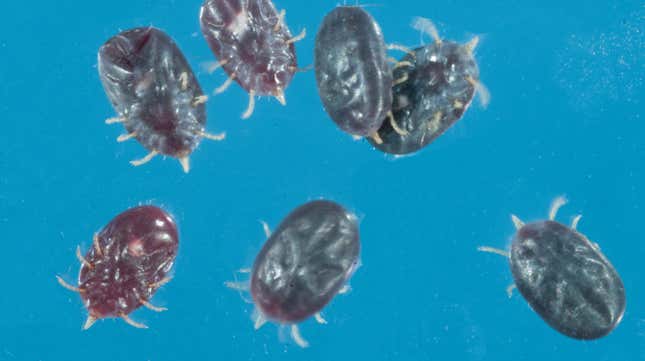
As if we don’t have enough bad news to share right now, a tick species associated with bats has been spotted in New Jersey for the very first time. The health risks are unknown, but these parasites, as common vectors for disease, could threaten humans, pets, and livestock.
Bats and ticks seem like an unholy combination, as both species are notorious for spreading diseases. Regrettably, a soft bat tick known as Carios kelleyi is known to live in dozens of U.S. states, and, as new research published in the Journal of Medical Entomology points out, they’ve finally made their way into New Jersey, specifically in Mercer and Sussex counties.
Last year, scientists from the Endangered and Nongame Species Program of the Division of Fish and Wildlife in the New Jersey Department of Environmental Protection identified larvae of Carios kelleyi on several big brown bats (Eptesicus fuscus), in a possible sign that these soft ticks are spreading. James Occi, a PhD student at the Rutgers Center for Vector Biology at Rutgers University–New Brunswick, is the lead author of the new study.
So-called “soft” ticks belong to the Argasidae family of ticks, and, true to their name, they are soft to the touch, featuring a leathery appearance. Hard ticks, on the other hand, belong to the Ixodidae family, and as anyone who’s come into contact with them knows, these blood-sucking parasites are built like tiny tanks. Deer ticks, which spread Lyme disease to humans, hail from the hard variety. All ticks, whether hard or soft, have the potential to transmit pathogens because they feed on blood, as Occi explained in an email.
As for Carios kelleyi, the disease risk they pose to humans is unknown, but there’s reason for concern, as these insects are known to bite people. What’s more, these ticks have been found to harbor the spotted fever group rickettsioses (a group of diseases caused by closely related bacteria) and the relapsing fever Borrelia, according to Occi.
Bats like to roost in human structures like attics and barns, where they, along with their pathogens, can come into contact with humans, cats, dogs, and livestock. Ticks are quite content to remain attached to their bat hosts, but the danger emerges when bats are removed from these human settings.
“Ticks are usually embedded in the bats, and there is no risk they will jump onto those handling bats. Indeed, ticks do not fly, skip, or jump and are overall a much slower blood feeder than mosquitoes, for example,” explained Dina Fonseca, a co-author of the new study from Rutgers-New Brunswick, in an email. “The primary safety strategy is to be aware of the potential for ticks to be left behind after bats are removed. Deprived of their normal blood source, these bats ticks may bite people.”
That bats and ticks are intermingling in this way is extra problematic, given that bats host an ungodly number of diseases, both known and unknown. The presence of Carios kelleyi is a potential sign that they’re spreading into new territories, highlighting the importance of studying these parasites. To that end, the researchers would like to gather more tick specimens from in and around New Jersey and test them for pathogens.
As a fun fact, Carios kelleyi is, technically speaking, not the first soft tick to be found in New Jersey. Back in 2001, scientists found a soft tick species called Carios jersey in a chunk of amber dating back some 90 million to 94 million years ago. Ticks have been around for quite a while, even feasting on the blood of dinosaurs during the Cretaceous.